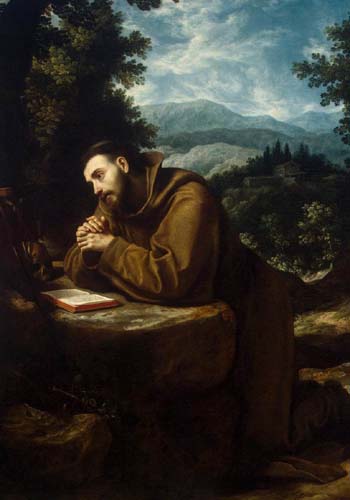History of Hymns: Saint's "Canticle of the Sun" inspires 20th-century hymn
“All Creatures of Our God and King,”
St. Francis of Assisi
UM Hymnal, No. 62
All creatures of our God and King,
Lift up your voice and with us sing,
O praise ye! Alleluia!
O brother sun with golden beam,
O silver moon with softer gleam,
O praise ye! Alleluia!
Francis of Assisi (ca. 1182-1226) lived during the Crusades. It was a time of knights on horseback and chivalry.
Francis was the son of a wealthy merchant with all of the advantages of the rising merchant class. After a riotous youth, he renounced his inheritance and all contact with his family.
Instead of choosing the life of a knight in armor on horseback, he chose to walk barefoot in the simplest and crudest of garments. Instead of seeking the attention of a lady of the court, he chose to follow Lady Poverty. Instead of traveling to the Holy Land as a warrior to reclaim Jerusalem, Francis journeyed to the Holy Land and, at great personal peril, proclaimed peace to the Muslim leader.
Even today one may walk the streets of Assisi and visit the sites where St. Francis lived his life in such a manner that he reformed the medieval Roman Catholic Church. That a humble monk, living the most ascetic of lifestyles, from this little out-of-the-way village could have had such a remarkable impact on the powerful church in Rome is astounding.
 |
| A 16th-century painting by Italian artist Cigoli depicts St. Francis of Assisi. The hymn, “All Creatures of Our God and King,” is a paraphrase of Francis’ song, “Canticle of the Sun.” IMAGE COURTESY WIKIMEDIA COMMONS |
Francis was a man close to nature, traveling long miles from village to village, living in the elements, sleeping in caves and preaching to anyone who would listen—even birds. Only someone so attuned to the natural world could have penned the “Canticle of the Sun.”
“Cantico di frate sole” (“Song of Brother Sun and of All Creatures”) was one of several laude—popular Italian spiritual songs for religious gatherings outside of the liturgy—composed by Francis. It is generally considered to be the earliest truly religious poem in Italian. Written near the end of his life around 1225 when his physical suffering was immense, this hymn expresses, long before the modern ecological movement, the oneness and interdependence of humanity with all of God’s creation.
British hymnologist J.R. Watson notes: “In the original the saint gives each element, such as fire and water, a human gender, so that they become ‘brother’ and ‘sister.’ This remains in the appellation of ‘Dear mother earth’ in verse 4, and is suggested by the personification of death as ‘kind and gentle’ in verse 6. These elements in the hymn make it seem tender as well as grand. It is based in part upon Psalm 148.”
William Henry Draper (1855-1933), a rector in Adel, near Leeds, England, versified the hymn in English for a procession of a Whitsuntide children’s festival early in the 20th century. Dr. Watson notes that Draper’s version “is too free to be called a translation.” When asked later in life when he wrote the hymn, Draper could only recall that it was written sometime between 1906 and its publication in The Public School Hymn Book (1919). Draper’s translation personifies all of the animals and calls on them to join in God’s praise. His final stanza concludes with a doxology.
The hymn owes its popularity in part to the stirring tune LASST UNS ERFREUEN (“Let us rejoice”) discovered in a German Catholic songbook, Geistliche Kirchengesänge (“spiritual hymns”), dating to 1623. The famous English composer Ralph Vaughan Williams (1872-1958) arranged the tune for the English Hymnal (1906) of which he served as musical editor, and used it with the Athelstan Riley hymn, “Ye Watchers and Ye Holy Ones” (UM Hymnal, No. 90). William Draper is responsible for taking this newly discovered tune and matching it with his versification of St. Francis’ hymn of praise.
Dr. Hawn is professor of sacred music at Perkins School of Theology.
Contact Us for Help
View staff by program area to ask for additional assistance.
